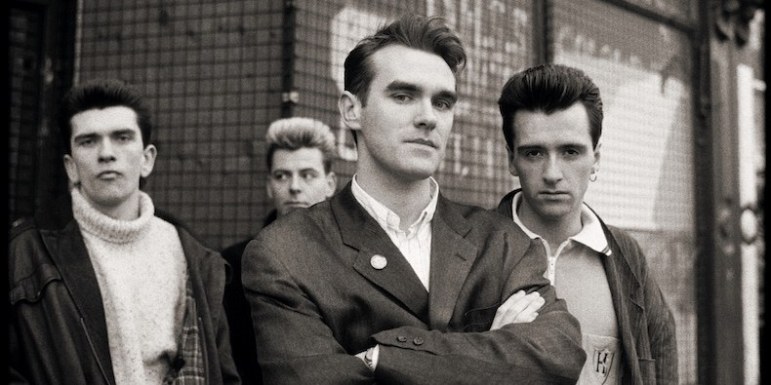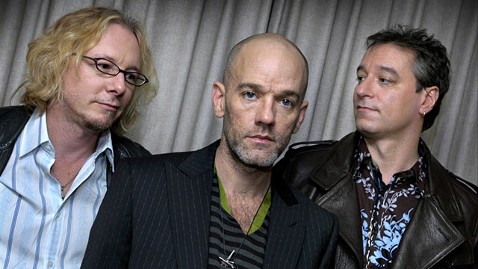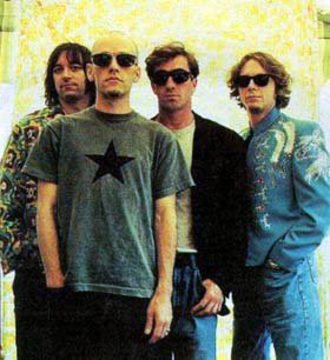Ten To Hear Again: The Smiths – Vol. 2
Listen To The List: The Smiths, Vol. 2 – Ten To Hear Again
If The Smiths you know best are songs like “Bigmouth Strikes Again”, “Panic”, “Girlfriend In A Coma” and “Stop Me If You Think You’ve Heard This One Before”, here are ten to hear again (or for the first time):
Okay, even though I love The Smiths I initially intended to only do one “Ten To Hear Again” list for them because of their small discography. However, several people have asked if I was going to do another one and they certainly have many great songs so I decided to do a second volume. Unlike the other groups where I have done multiple lists this is not divided by years or era, it is just another collection of great and potentially overlooked Smiths songs; hence, volume two. So, if The Smiths you know best are songs like “Bigmouth Strikes Again”, “Panic”, “Girlfriend In A Coma” and “Stop Me If You Think You’ve Heard This One Before”, here are ten to hear again:
- “Last Night I Dreamt That Somebody Loved Me” – From the album Strangeways, Here We Come
The last single ever released by The Smiths months after the break-up of the group, “Last Night I Dreamt That Somebody Loved Me” is a sad and beautiful song that both Morrissey and Marr (at separate times) have said is their favorite Smiths song. That said, it is not really a great single because of the long crowd riot intro and it loses much of its power if that intro is edited off. Regardless, it is an excellent song and a powerful final testament to the songwriting team of Morrissey and Marr.
- “Is It Really So Strange?” – B-Side to the single “Sheila Take A Bow”; later included on the compilation Louder Than Bombs
“Is It Really So Strange?” is a gloriously silly travelogue that shows off the humorous side of The Smiths that sometimes people forget about. Musically, it is also a nice bridge between the more raw, jangly sound of the early albums and the slicker, more produced sound of their later work.
- “Frankly, Mr. Shankly” – From the album The Queen Is Dead
Unquestionably one of The Smiths less significant tracks, “Frankly, Mr. Shankly” still is a tart and spritely tell-off to the workaday life from a character (Morrissey himself?) who pines for fame and fortune. It’s the kind of sentiment that anyone who has ever worked a boring, dead-end job and dreamed of more can relate to and The Smiths turn it into fun, alt-pop gold.
- “Death At One’s Elbow” – From the album Strangeways, Here We Come
For being so brief “Death At One’s Elbow” is actually quite an interesting song. If one listens to just Johnny Marr’s instrumental part it is obvious this is his attempt to write the age old rock and roll trope of the “train song” – complete with chugging engine and blowing whistle. However, rather than writing a lyric that fits that sound Morrissey instead writes an almost darkly humorous love triangle murder story, told in the first person. It’s an unusual juxtaposition that often gets overlooked because of the song’s brevity and the fact it is buried so deep on the album but in truth it works really, really well to create an interesting song that has little like it in The Smiths catalog.
- “You Just Haven’t Earned It Yet, Baby” – From the album Louder Than Bombs
Originally recorded to be a single and then shelved in favor of “Shoplifters Of The World Unite”, the propulsive and bratty “You Just Haven’t Earned It Yet, Baby” would have been a better choice in my opinion. Not only does it better represent the sound and spirit of The Smiths, but it is the more interesting song.
- “Cemetry Gates” – From the album The Queen Is Dead
The music for “Cemetry Gates” was originally written by Johnny Marr a year before the recording of The Queen Is Dead but he set it aside as being too boring to be used on an album. However, when Morrissey later heard him play it he disagreed and encouraged Marr to flesh it out, then adding his unusual lyrics about a game played stealing quotes from headstones and trying to determine if they are real or not. It is exactly the type of song that only The Smiths could pull off: maudlin, silly and thoughtful all at once and Marr’s guitar part is the perfect bed for Morrissey’s words.
- “Suffer Little Children” – From the album The Smiths
One of the very first songs ever written by Morrissey and Marr “Suffer Little Children” deals with the Saddleworth Moors Murders of their childhood and immediately establishes the sound and tone of The Smiths. Controversial from the outset, the song mentions some of the murdered children and the killers by name, yet balances the shock of what happened with a real sense of the tragedy of it all. At heart “Suffer Little Children” is really a song about lost innocence, and in a sense is more about Morrissey’s own childhood sense of fear and betrayal by the community, than it is about the actual crime. It is a powerful song of wilted beauty and is quite skilled to be the work of two men barely into their 20’s and with little real background in music.
- “Back To The Old House” – B-Side to the single “What Difference Does It Make?”; later included on the compilation Hatful Of Hollow
A simple lullaby about the conflicted emotions tied to the physical geography of our past. “Back To The Old House” at first is a meditation on all of the bad memories that happened at there. However, our narrator realizes that many good things also happened there as well and later regrets that he cannot return. Of course, the genius of the song is that this could be interpreted as that we can’t go back to the physical places because they may not be there any longer (or may belong to someone else) or because we can never go back to being the person we were then. In an unrelated note this song is also the inspiration for the Barenaked Ladies single “The Old Apartment” which was originally written as an acoustic ballad in homage to this song before being reworked into the version eventually released.
- “Sweet And Tender Hooligan” – B-Side to the single “Sheila Take A Bow”; later included on the compilation Louder Than Bombs
Another of a handful of The Smiths album cuts that really is allowed to rock out. Johnny Marr rips through the song like his life depends on it and second guitarist Craig Gannon carries the rhythm and fills out the sound well. In my head I have always thought of this song as part of a triptych of songs about teenage boys behaving badly along with XTC’s “No Thugs In Our House” and Oingo Boingo’s “Only A Lad”.
- “Meat Is Murder” – From the album Meat Is Murder
While I am not a vegetarian and this song has never really made me consider becoming one, I have always admired The Smiths for taking such a strong stance on an issue that they (or at least Morrissey) care about so passionately. Especially as it is such an anti-rock star position is some ways, especially in the mid 1980’s. I also must say that I vastly prefer the maudlin, almost tenderhearted version that The Smiths recorded here compared to the harsher, more obvious one that Morrissey still performs in his solo live shows. The Smiths’ version is more subtle and the gentleness of the song is only slyly undercut by the words and the sound effects of the slaughterhouse lending it a quiet power and grace that is lacking on Morrissey’s newer version.









